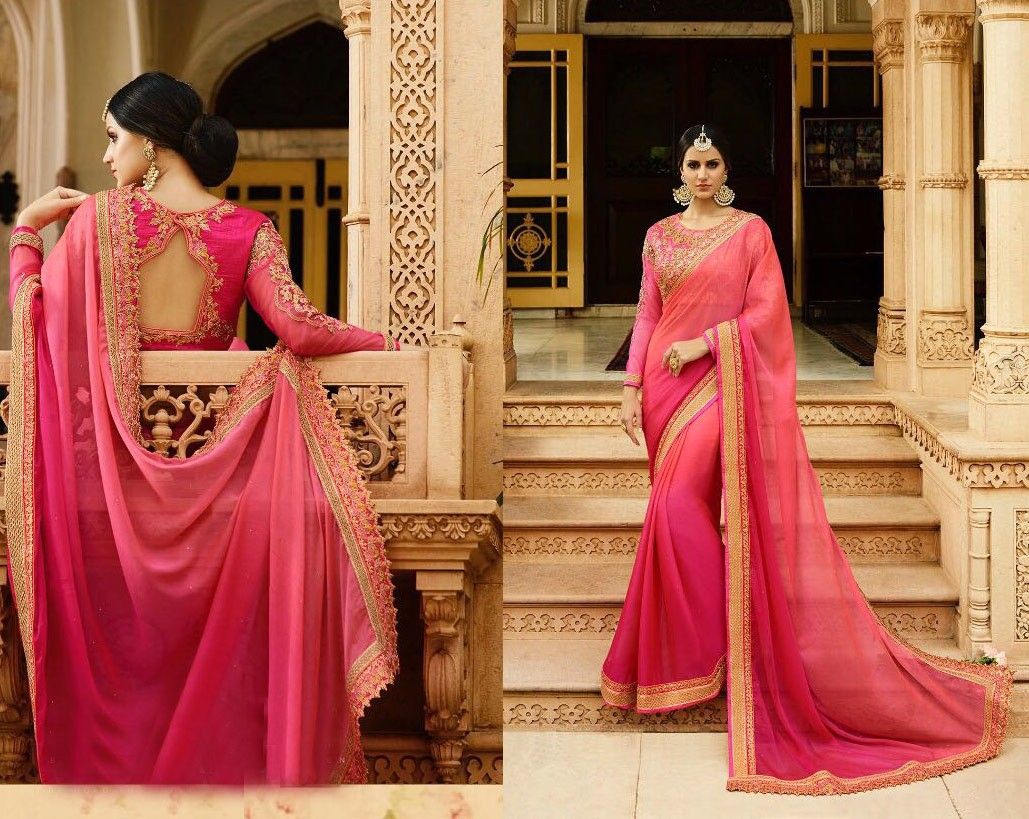Why Every Indian Women Should Own a Banarasi Silk Saree

Every Indian woman has dreams of adorning themselves with beautiful silk sarees, glamorous jewelry, and carrying themselves with a stride of elegance. Banarasi silk sarees are Indian sarees made in the city of Varanasi, also known as Benares and Banars.
The sarees made here are amongst the finest sarees known to the world, and very few people exist who cannot appreciate the sheer beauty of them.
Wearing a saree can be empowering by itself, but there’s something about a rich Banarsi saree that leaves everyone start-struck. Whether it’s a wedding, a bridal shower, or festival season, owning a great Banarasi silk saree can be a great decision to wear to any occasion.
The origin
Banarasi sarees came into existence during the early Mughal era when Muslim artisans and craftsmen chose Banaras as the place that resonated greatly with their culture. Here, they started weaving silk Banarasi sarees that would soon become a worldwide sensation.
Their special characteristics are inspired by the designs from the Mughal era, with intricate intertwining floral and foliate motifs, kalga and bel, and a string of upright leaves called jhallar at the outer edge of the border defining them.
These sarees take anywhere from two weeks to six months to complete, depending on the level of intricacy and skill required for the pattern and designs.
Types of Banarasi Sarees:
Banarsi sarees aren’t only found in silk and can be woven from four main fabrics. The use of fabrics apart from these are also noticed.
1. Katan
A plain silk fabric called Katan is used to make sarees. These sarees are made with pure silk threads that are twisted and woven into the silk sarees. During ancient times, these were woven using handlooms.
2. Shattir
Shattir is the only fabric used to create exquisite contemporary and exclusive designs under the name of Banarasi.
3. Organza with zari and silk
Brocades are one of the most beautiful and richly woven fabrics, where the patterns are woven with different designs made by warp and weft. Silver threads are also found with gold and are woven closely around a silk yarn to create a beautiful zari brocade.
4. Georgette Banarasi Sarees
Georgette is a finely woven, light fabric that has a simple and plain weave. This is popular with contemporary sarees.
Categories of Banarsi Sarees based on The Design Process:
- Tanchoi Banarasi Saree: This beautiful ‘Jamawar’ style where paisleys or Labyrinth are woven by zari. This is a different kind of Benarasi saree that is now trending for weddings.
Artisans from Banaras weave patterns on the sarees with magnificent, colorful weft silk yarns. The pallu of this sari is decorated often with large motifs of paisleys while the border might have simple or intricate criss-cross patterns.
- Cutwork Banarasi Sarees: These sarees are not as expensive as the ones mentioned above, and are considered the less expensive version of the Jamdani sarees. This type is made using the cutwork technique on plain texture.
Cotton is mixed with silk to make this type of saree. The most famous motifs featured in cutwork sarees include jasmine, marigold flowers, creepers, and leaves.
- Orange Cutwork Banarasi Saree: These sarees have the most delicate look of all Banarsi sarees and are adorned with the most work amongst them. These are delicately woven sarees that have golden zari weft. These add sheen to these tissue sarees making them unique and royal.
The most common designs used in tissue sarees are golden zari woven lotus floating on a radiant pond, in which the water drops are designed with cut-work technique. The border and pallu are patterned with self woven paisleys.
- Butidar Banarasi Sarees: These are considered to be the most distinctive and trending Banarasi saree. They are richly woven sarees brocaded with threads of gold, silk, and silver. The gold is darker in shade and the silver threads subtly glimmer. Weavers of Banaras often refer to this variety of brocade patterns as Ganga-Jamuna. Motifs are locally popularized as Angoor Bail, Ashraffi Butti, Latiffa Butti, Reshem Butti Jhummar Butti, and more.
How To Care For Your Banarsi Saree:
Banarasi silk sarees require a lot of maintenance, and following a few of these tips can help you preserve the beauty for a long period.
- Don’t leave the saree on a hanger for long to avoid permanent creases
- Keep them in dark spots and try covering them up with a muslin cloth.
- Iron the saree with utmost care on low settings or have a professional do it.
- Avoid water and perfumes to keep stains off your saree.
- Dry clean them at a professional to ensure the utmost care is taken while cleaning them.
Now that you know everything about Banarasi silk sarees, the only thing left to do is to go flaunt your saree off to the world.
